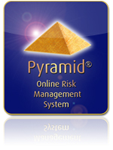What are the 14 allergens required on food labelling?
Question
What are the 14 allergens required on food labelling?
Answer
What is an allergen?
An allergen is a substance that causes an allergic reaction.
What are the symptoms of an allergic reaction?
Allergic reaction symptoms can can vary from mild to severe. Symptoms are often mild when you are first exposed to an allergen, but the symptoms can get worse if you are repeatedly exposed.
If exposed to an allergen, a sudden and server allergic reaction can develop within seconds. This type of reaction is known as anaphylaxis and results in potentially life-threatening symptoms. Anaphylaxis is the swelling of the airway, the inability to breathe as well as a sudden, rapid drop in blood pressure. Seek emergency help if you experience a severe allergic reaction as death can occur within 15 minutes.
Mild symptoms:
- Nasal congestion
- Hives
- Itching
- A rash
- Watery or itchy eyes
Severe symptoms:
- Vomiting
- Nausea
- Abdominal cramping or pain
- Unconsciousness
- Pain or tightness in the chest
- Diarrhoea
- Dizziness
- Fear or anxiety
- Flushing of the face
- Heart palpitations
- Difficulty swallowing
- Swelling of the face, eyes, or tongue
- Weakness
- Wheezing
- Difficulty breathing
It became a legal requirement for all food businesses to provide information about the allergenic ingredients used in any food they sell or provide. Below are the 14 allergens that must be labelled or provided to your customer to comply with the The Food Information Regulation that came in to force in December 2014. Our food safety consultants can help you and your business with any food safety legal compliance issues.
1. Celery
Includes and can be found in:
- Celery stalks
- Leaves
- Seeds
- The celery root called celeriac
- Celery salt
- Salads
- Some meat products
- Soups
- Stock cubes
2. Cereals containing gluten
Cereals include wheat (such as spelt and Khorasan wheat/Kamut), rye, barley and oats.
Cereals are often found in foods containing flour, including:
- Baking powder
- Batter
- Breadcrumbs
- Bread
- Cakes
- Couscous
- Meat products
- Pasta
- Pastry
- Sauces
- Soups
- Fried foods that have been dusted with flour
3. Crustaceans
Including:
- Crabs
- Lobster
- Prawns
- Scampi
- Shrimp paste (often used in Thai and south-east Asian curries or salads)
4. Eggs
Found in:
- Cakes
- Some meat products
- Mayonnaise
- Mousses
- Pasta
- Quiche
- Sauces
- Pastries
- Foods brushed or glazed with egg
5. Fish
Can be found in:
- Fish sauces
- Pizzas
- Relishes
- Salad dressings
- Stock cubes
- Worcestershire sauce.
6. Lupin
Lupin is a type of flower. The flour and seeds of Lupin can be found in:
- Some types of bread
- Pastries
- Pasta
7. Milk
Found in:
- Butter
- Cheese
- Cream
- Milk powders
- Yoghurt
- Foods brushed or glazed with milk
- Powdered soups
- Powdered sauces
8. Molluscs
Includes:
- Mussels
- Land snails
- Squid
- Whelks
- Oyster sauce
- Fish stews
9. Mustard
Includes and can be found in:
- Liquid mustard
- Mustard powder
- Mustard seeds
- Breads
- Curries
- Marinades
- Meat products
- Salad dressings
- Sauces
- Soups
10. Nuts
Nuts as an allergen refer to nuts which grow on trees (not including peanuts which are a legume and grow underground).
Nuts include and can be found in:
- Cashew nuts
- Almonds
- Hazelnuts
- Breads
- Biscuits
- Crackers
- Desserts
- Nut powders
- Stir-fried dishes
- Ice cream
- Marzipan (almond paste)
- Nut oils
- Sauces
11. Peanuts
Peanuts (sometimes referred to as a groundnut) are often used as an ingredient.
Can be found in:
- Biscuits
- Cakes
- Curries
- Desserts
- Sauces (such as satay sauce)
- Groundnut oil
- Peanut flour
- Peanut butter
12. Sesame seeds
Found in:
- Bread e.g. sprinkled on hamburger buns
- Breadsticks
- Houmous
- Sesame oil
- Tahini
- Salads
13. Soya
Found in:
- Bean curd
- Edamame beans
- Miso paste
- Textured soya protein
- Soya flour
- Tofu
- Desserts
- Ice cream
- Meat products
- Sauces
- Vegetarian products
14. Sulphur dioxide (sometimes known as sulphites)
Often used and can be found in:
- Dried fruit such as raisins, dried apricots and prunes
- Meat products
- Soft drinks
- Vegetables
- Wine and beer











Comments are closed.